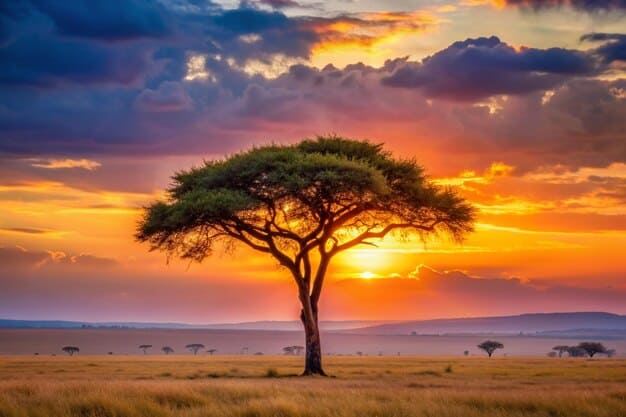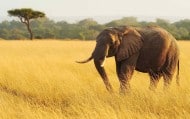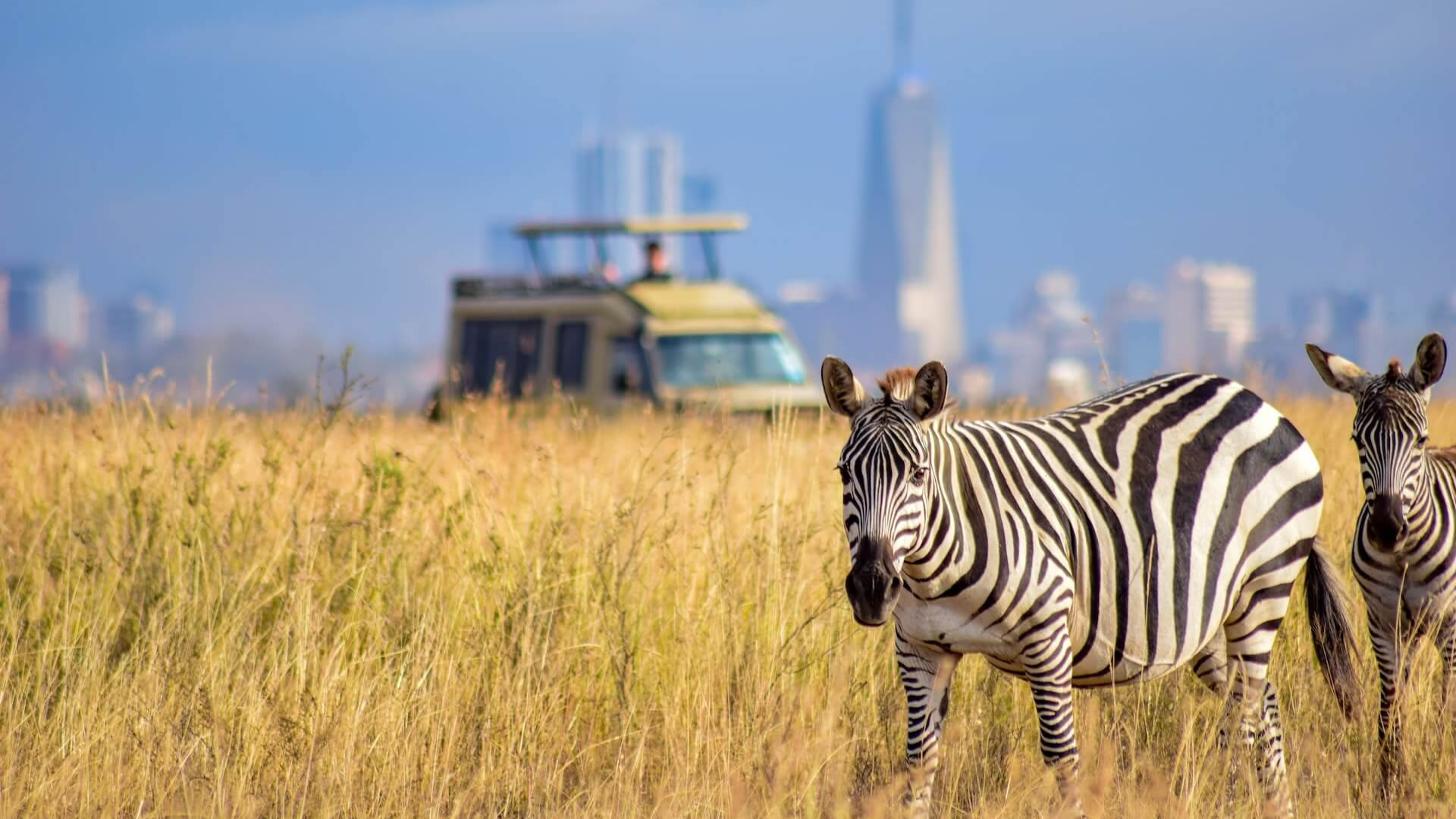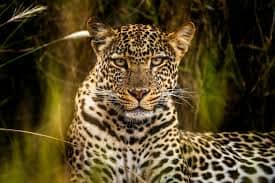
Kenya Safaris Guide: What To Expect
What to Expect During Kenya Safaris: A Complete Guide for First-Time and Seasoned Travelers
Introduction
If you’re dreaming of wide-open plains, thundering herds of wildebeest, and the raw power of lions in their natural habitat, Kenya is likely already on your radar. Known as the cradle of safari, Kenya offers one of the richest wildlife experiences on earth. Whether you’re a seasoned adventurer or setting out on your first safari, knowing what to expect can shape your trip from good to unforgettable.
Kenya’s safari experience is not just about ticking animals off a checklist. It’s about watching an elephant calf fumble through grass at dawn, feeling the ground tremble as thousands of wildebeest cross the Mara River, or sharing a sunset with Maasai warriors while the savannah stretches endlessly before you. The rhythm of life here is ancient, raw, and deeply moving.
But safaris aren’t all action-packed chases and dramatic hunts. You’ll also spend quiet moments tracking paw prints, listening to bird calls, and sipping coffee as the bush slowly wakes up. From luxury lodges to budget-friendly campsites, from balloon rides over the Mara to walking safaris with expert guides, the variety of experiences is vast.
In this guide, we’ll cover exactly what to expect: the safari types, the wildlife, the landscapes, the cultural encounters, and the practical details that will make your trip smooth and rewarding. Whether you want to photograph the Big Five or simply soak in the wilderness, this guide has you covered.
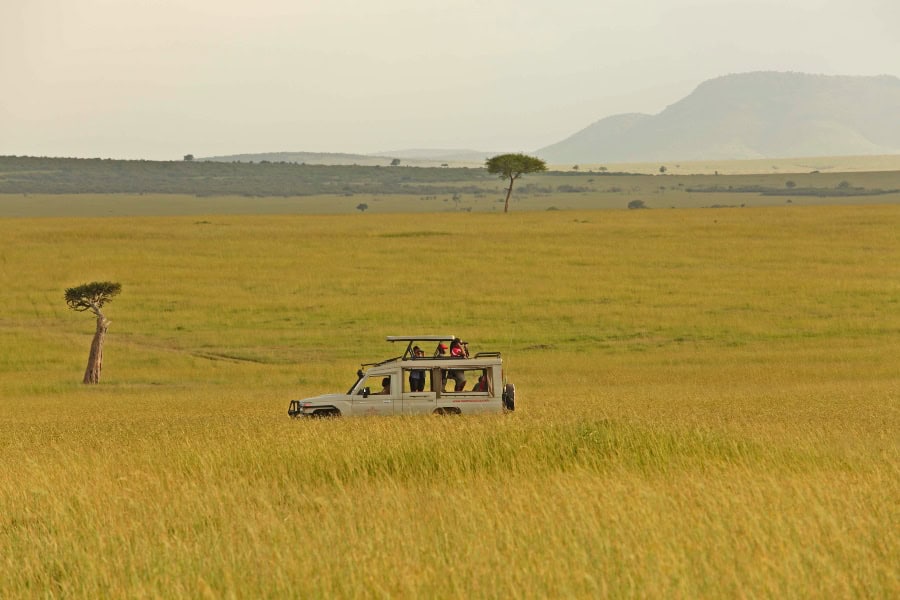
Types of Kenya Safaris
Kenya doesn’t offer a one-size-fits-all safari. Depending on your travel style, budget, and interests, you can tailor your experience to match your adventure appetite. Here’s a breakdown of the main types of safaris you’ll find in Kenya.
1. Game Drives (Traditional Safaris)
This is the classic safari experience. You’ll ride in a 4×4 vehicle (often with an open roof for better viewing), guided by an expert who knows where to find animals. Game drives typically happen twice a day—early morning and late afternoon—when animals are most active.
Expect to spot lions, elephants, giraffes, zebras, and if you’re lucky, leopards and cheetahs.
Pros: Comfortable, safe, best for seeing a lot of wildlife in a short time.
Best for: First-timers and wildlife enthusiasts.
2. Walking Safaris
If you want to slow down and see the bush through a different lens, walking safaris are unmatched. Guided by armed rangers and expert trackers, you’ll learn to read tracks, understand animal behavior, and appreciate the small wonders—plants, insects, and birdlife—that are easy to miss from a vehicle.
Pros: Immersive, quiet, educational.
Best for: Active travelers, photographers, repeat safari-goers.
3. Balloon Safaris
Few experiences rival drifting silently over the savannah at sunrise in a hot air balloon. You’ll get a bird’s-eye view of the landscape and wildlife below, followed by a champagne breakfast in the bush.
Masai Mara is the most popular spot for balloon safaris, especially during the Great Migration.
Pros: Breathtaking views, unforgettable.
Best for: Honeymooners, photographers, special occasion travelers.
4. Horseback and Camel Safaris
For something completely off the beaten path, consider a horseback safari in Laikipia or a camel safari led by Samburu or Maasai guides. These safaris get you deep into remote areas where vehicles can’t go, and animals see you as part of the landscape rather than a threat.
Pros: Intimate wildlife encounters, adventure-packed.
Best for: Experienced riders, adventurous spirits.
5. Photographic Safaris
If photography is your passion, specialized photographic safaris offer guides who are not just wildlife experts but seasoned photographers too. Vehicles are often custom-fitted with camera mounts and charging ports. You’ll get tips on lighting, framing, and how to capture animals in action.
Pros: High-quality images, expert guidance.
Best for: Amateur and professional photographers.
6. Luxury vs Budget Safaris
Kenya caters to every budget.
- Luxury safaris mean five-star lodges, gourmet meals, spa treatments, and private guides.
- Mid-range safaris offer comfortable lodges or tented camps with great amenities and shared drives.
- Budget safaris include basic campsites, group tours, and self-drive options (though less common).
No matter your budget, the wildlife is the same—the difference is in comfort, exclusivity, and extra services.
Top Destinations in Kenya for Safari
Kenya’s national parks and reserves are as varied as they are spectacular. Whether you’re after iconic wildlife encounters, dramatic landscapes, or quiet wilderness areas away from the crowds, there’s a safari destination to suit every traveler.
Here’s a breakdown of Kenya’s top safari spots—where to go, what to see, and why each is worth your time.
1. Masai Mara National Reserve
If there’s one place that defines the quintessential African safari, it’s the Masai Mara.
Bordering Tanzania’s Serengeti, the Mara is best known for the Great Migration, when over 1.5 million wildebeest (along with zebras and gazelles) cross into Kenya from July to October in search of greener pastures.
But even outside migration season, the Mara is teeming with life. You’ll likely see all of the Big Five—lion, leopard, elephant, buffalo, and rhino—plus cheetahs, hyenas, hippos, and crocodiles.
The wide open plains make game viewing easy and photography superb.
Best for: First-time visitors, Great Migration watchers, photographers.
2. Amboseli National Park
Amboseli is the place for elephant lovers. Large herds roam the park, often against the backdrop of Mount Kilimanjaro, Africa’s highest peak. It’s one of the best spots in Africa to observe elephants up close and watch their interactions.
The park’s landscape is a mix of swamps, savannah, and seasonal lakes, attracting a range of birdlife and other animals like lions, cheetahs, and giraffes.
Best for: Elephant sightings, Kilimanjaro views, birdwatchers.
3. Tsavo East and West National Parks
Covering over 22,000 square kilometers, Tsavo is Kenya’s largest protected area and one of the world’s biggest national parks.
It’s split into Tsavo East and Tsavo West, each offering distinct landscapes.
- Tsavo East: Known for its red-dust elephants, open plains, and the Yatta Plateau (the world’s longest lava flow).
- Tsavo West: Features rocky hills, volcanic craters, and the stunning Mzima Springs—a crystal-clear water source where you can spot hippos and crocodiles through underwater viewing chambers.
Tsavo is wilder and less crowded than Masai Mara or Amboseli, offering a more rugged safari feel.
Best for: Off-the-beaten-path travelers, adventurous safaris, diverse landscapes.
4. Samburu National Reserve
In northern Kenya, Samburu offers a different safari experience.
It’s hotter, drier, and home to unique wildlife species you won’t easily find elsewhere—like Grevy’s zebra, reticulated giraffe, Beisa oryx, Somali ostrich, and gerenuk (the “giraffe gazelle”).
The Ewaso Nyiro River cuts through the reserve, attracting animals year-round, and the Samburu people’s culture adds depth to the visit.
Best for: Unique wildlife, cultural experiences, dryland scenery.
5. Lake Nakuru National Park
Famous for its flocks of pink flamingos, Lake Nakuru is a compact park centered around a shallow soda lake. While flamingo numbers fluctuate with water levels, you’ll still find thousands of water birds, along with white and black rhinos, Rothschild’s giraffes, lions, leopards, and baboons.
It’s one of the few places where you have a good chance of spotting rhinos reliably, thanks to strong conservation efforts.
Best for: Birdwatchers, rhino sightings, shorter safaris.
6. Laikipia Conservancies
For a conservation-centered safari, head to Laikipia in central Kenya. Private conservancies like Lewa, Ol Pejeta, and Borana combine luxury lodges, cutting-edge wildlife conservation, and close community partnerships.
You’ll see endangered species like black rhinos, Grevy’s zebras, and even chimpanzees at Ol Pejeta Conservancy. Activities like night drives, walking safaris, and horseback safaris are more common here than in national parks.
Best for: Conservation travelers, rhino lovers, intimate safari experiences.
7. Lesser-Known Gems
- Meru National Park: Lush, wild, and remote—famous as the setting for Born Free (Elsa the lioness).
- Aberdare National Park: Misty forests, waterfalls, and high-altitude game viewing (great for seeing elusive species like bongo antelope).
- Hell’s Gate National Park: Unique for cycling and hiking safaris through dramatic gorges and geothermal scenery.
- Nairobi National Park: Just outside the capital—perfect for a quick safari with lions, rhinos, and giraffes against a city skyline.
No matter where you go, each park and reserve offers a distinct slice of Kenya’s rich natural heritage.
If you have time, combining two or three destinations (like Masai Mara + Amboseli + Laikipia) gives a more rounded safari experience.
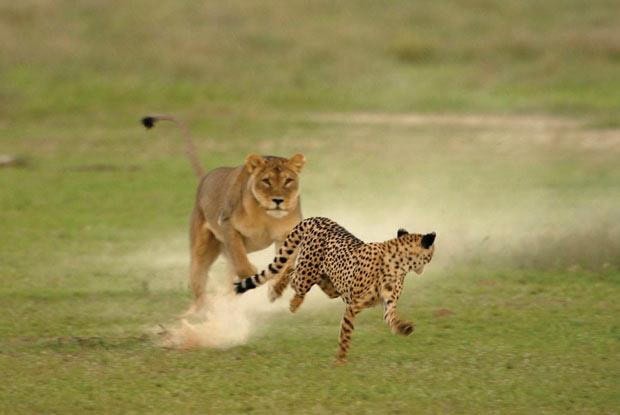
Wildlife You’ll Encounter on Kenya Safaris
Kenya’s wildlife is legendary for good reason. The sheer diversity and density of animals make every game drive unpredictable and thrilling. Whether it’s the drama of a lion hunt or the quiet elegance of giraffes moving across the savannah, the encounters leave lasting impressions.
Here’s what to expect when it comes to Kenya’s animal stars.
1. The Big Five
The Big Five—lion, leopard, elephant, buffalo, and rhino—were originally named by hunters as the most challenging animals to track on foot. Today, they remain a bucket-list highlight for most safari travelers.
- Lions: Social and powerful, lions are relatively easy to spot in Masai Mara and Tsavo. Look for prides resting under acacia trees during midday or hunting at dawn and dusk.
- Leopards: Elusive and solitary, leopards prefer riverine forests and rocky areas. Samburu, Laikipia, and Masai Mara are solid bets for sightings.
- Elephants: Amboseli is famous for large, tusked herds; Tsavo’s red-dust elephants are iconic too. You’ll also see them in Laikipia and Masai Mara.
- Buffalo: Often underestimated, buffaloes are formidable animals seen across Kenya’s parks, typically in large herds or solitary bulls known as “dagga boys.”
- Rhinos: Black and white rhinos are under heavy protection. Lake Nakuru and Ol Pejeta Conservancy offer the best chances to see them up close.
2. The Great Migration
One of the world’s greatest wildlife spectacles, the Great Migration sees over 1.5 million wildebeest, along with zebras and Thomson’s gazelles, move in a giant loop between Tanzania’s Serengeti and Kenya’s Masai Mara.
From July to October, the herds cross into Kenya, and the drama peaks at the Mara River crossings, where crocodiles lie in wait and predators follow closely.
Even outside the migration months, the resident wildlife in Masai Mara is abundant and varied, so don’t worry if your dates don’t align perfectly.
3. Birdlife
Kenya is a birder’s paradise, with over 1100 recorded species—more than most countries in the world. Even if you’re not an avid birdwatcher, you’ll be amazed by the colors and behaviors.
Notable birds to look for include:
- Lilac-breasted roller (Kenya’s national bird)
- Secretary bird (a snake-hunting raptor with long legs)
- Ostrich (the world’s largest bird)
- Flamingos at Lake Nakuru and Lake Bogoria
- Fish eagles, hornbills, and countless dazzling sunbirds
Binoculars are well worth packing—even casual travelers will find birdwatching unexpectedly addictive here.
4. Rare and Endemic Species
Kenya’s varied ecosystems harbor animals that you won’t easily find elsewhere in Africa.
- Grevy’s zebra: The largest and most endangered zebra species, found in Samburu and Laikipia.
- Reticulated giraffe: Known for its striking geometric coat pattern, also common in northern Kenya.
- African wild dog: Endangered and elusive, but sightings are possible in Laikipia and Samburu.
- Gerenuk: The “giraffe gazelle” that stands on its hind legs to browse trees, spotted in Samburu.
You’ll also find hippos, crocodiles, cheetahs, warthogs, hyenas, baboons, jackals, and a long list of antelopes—from graceful impalas to the bulky eland.
It’s Not Just About the Big Animals
A key part of safari magic lies in the details:
Watching dung beetles roll their prize across the road.
Spotting a chameleon change color in the bushes.
Noticing lion cubs play-fight while their mother watches on.
Listening to the distant whoop of a hyena at night.
The beauty of Kenya’s safari experience is how every level of life—big and small—demands your attention.
What a Typical Safari Day Looks Like
A safari in Kenya doesn’t follow the same rhythm as a typical vacation. You’re tuned to the natural clock—when animals move, you move. Days start early, end early, and the tempo swings between bursts of activity and deep relaxation.
Here’s a clear breakdown of what your safari days will likely look like.
5:30 AM – Wake Up Call
Your day starts before sunrise.
A gentle knock on your tent or lodge door, often with fresh coffee or tea, gets you moving. Why so early? Animals are most active in the cool dawn hours—hunting, grazing, moving to water sources.
Dress in layers. Mornings can be chilly even in the dry season, but temperatures rise quickly.
6:00–6:30 AM – Morning Game Drive
You’ll pile into the safari vehicle with your guide and set off into the bush as the first light breaks.
This is prime time to see predators finishing their hunts, big cats on the move, and herbivores waking up.
Expect to spend 2 to 4 hours on the drive, depending on sightings and terrain. Guides often pack tea, coffee, and snacks, so you’ll stop at scenic spots for a bush breakfast or coffee break.
By late morning, animals slow down and seek shade—so do you.
10:00–11:00 AM – Return to Camp and Breakfast/Brunch
You’ll head back to camp or lodge where a hearty breakfast or brunch awaits—usually buffet style with eggs, fruit, pastries, and local dishes.
After eating, it’s down time. Some travelers nap, swim, read, or upload photos. Others chat with guides, walk around the camp, or visit nearby villages (if excursions are offered).
This midday lull is yours to recharge.
3:30–4:00 PM – Afternoon Tea and Snacks
Before the afternoon drive, camps typically serve tea, coffee, and light bites—cakes, biscuits, or samosas.
By now, the sun is lower, temperatures cooler, and animals begin stirring again.
4:00–6:30 PM – Evening Game Drive
You’ll head back into the bush for another drive. Golden hour light makes this prime time for photographers. Elephants head to waterholes, big cats get active again, and birds call before roosting.
Most guides bring sundowners—gin and tonic, beer, or soft drinks—to enjoy at a scenic spot as the sun sets dramatically over the plains.
7:00 PM Onward – Dinner and Campfire
Back at camp, showers, cocktails, and dinner follow. Meals range from BBQ buffets to multi-course gourmet spreads, depending on your camp’s style.
Evenings are often spent around the campfire swapping stories with fellow travelers or listening to guides share tales of the bush.
Some camps offer night drives (especially in private conservancies), where you’ll spotlight nocturnal animals—porcupines, aardvarks, bush babies, and elusive predators.
By 9:30–10:00 PM, most people turn in. Early mornings call again.
Camp/Lodge Differences
While the general rhythm stays consistent, your experience shifts depending on where you stay:
- Luxury lodges: Private guides, spa treatments, gourmet food, infinity pools.
- Mid-range camps: Comfortable en-suite tents, great guides, communal dining.
- Budget campsites: Basic tents, shared bathrooms, simple meals—but the same wildlife outside your tent flap.
A Safari Is Both Relaxing and Energizing
The alternating flow of adventure and rest is part of what makes safaris special. You cover a lot of ground, but you also unplug, slow down, and sink into nature’s pace.
By the end of a safari day, don’t be surprised if you feel both tired and deeply content.
Best Time to Visit Kenya for Safari
One of the most common questions travelers ask is, “When is the best time to go on safari in Kenya?”
The short answer is: Kenya is a year-round safari destination—but depending on what you want to see, certain months are better than others.
Here’s a clear breakdown to help you plan smartly.
Kenya’s Safari Seasons
Kenya’s climate is largely shaped by two factors: rainfall and animal movements.
Let’s split the year into clear seasons.
1. Dry Season (June to October)
This is peak safari season—and for good reason.
- Weather: Sunny, clear skies, minimal rainfall, cooler temperatures (especially June–August).
- Wildlife: Animals gather around waterholes and rivers, making them easier to spot. Vegetation is sparse, so visibility is excellent.
- The Great Migration: Wildebeest and zebra herds arrive in Masai Mara (July to October), with dramatic Mara River crossings typically peaking in August–September.
Pros: Best wildlife viewing, Great Migration spectacle, low mosquito numbers.
Cons: Higher prices, popular parks (like Masai Mara) can get busy.
2. Short Rains (November to December)
The short rains arrive, usually as afternoon showers.
- Weather: Warm, short bursts of rain—landscape turns lush and green quickly.
- Wildlife: Animals spread out more with increased water availability, but sightings are still solid. Calving season starts for many herbivores.
- Birding: Migratory birds arrive, boosting species diversity.
Pros: Fewer tourists, beautiful green landscapes, good value deals.
Cons: Rain can make some roads muddy; wildlife is slightly harder to spot.
3. Green Season (January to March)
A short dry window between the rains, often overlooked but excellent.
- Weather: Hot and dry, especially in February and March.
- Wildlife: Young animals (born after short rains) attract predators—expect action.
- Photography: Green scenery and clear skies combine beautifully.
Pros: Good game viewing, fewer crowds, lower prices than peak season.
Cons: Hotter temperatures, some areas can feel dry and dusty by March.
4. Long Rains (April to May)
This is considered low season—Kenya’s wettest months.
- Weather: Heavy, prolonged rains, especially in late afternoon and night. Some lodges close temporarily.
- Wildlife: Animals are still present but harder to find due to thick vegetation and dispersed water sources.
- Birding: Excellent, with lush habitat and nesting activity.
Pros: Dramatic skies, vibrant scenery, rock-bottom prices, solitude.
Cons: Muddy roads, travel disruptions possible, fewer lodges open.
Regional Differences Matter
Kenya is diverse, and different areas behave differently:
- Masai Mara: Best July–October (Migration) but good year-round.
- Amboseli: Clear Kilimanjaro views during dry season; wet season brings lush swamps and birds.
- Samburu and Laikipia (north): Warmer and drier year-round—less affected by rains.
- Coastal areas (Mombasa, Lamu): Best January–March and July–October for beach add-ons.
Bottom Line — When Should You Go?
- For wildlife density + easy spotting → July to October
- For fewer crowds + green beauty → January to March or November–December
- For budget travelers + photographers → April–June (if you’re okay with rain)
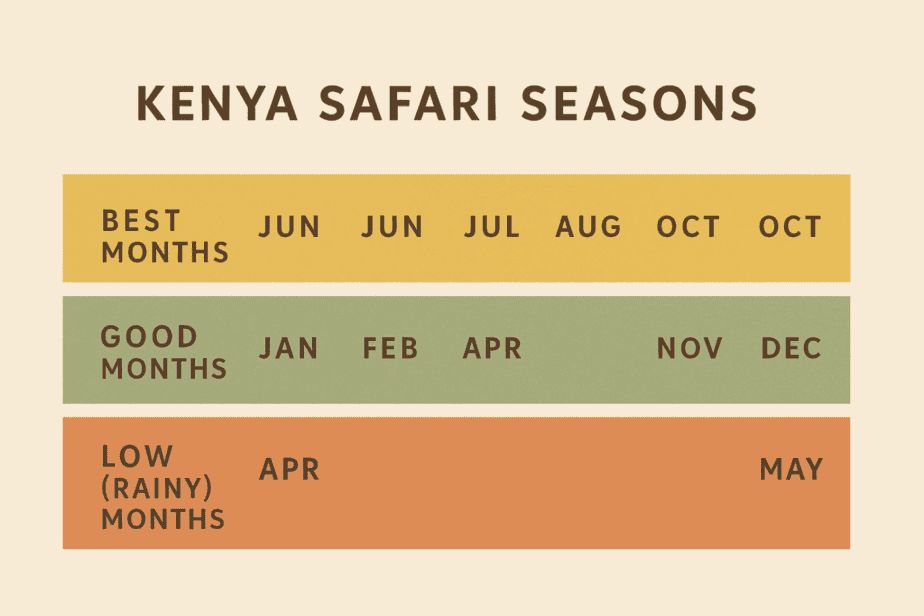
No matter when you go, Kenya delivers.
Even in the rainy months, you’ll still see plenty of wildlife—you just need to pack flexible expectations (and a rain jacket).
Packing List for Kenya Safari
Packing smart makes or breaks a safari.
You don’t need to overpack—but missing essentials can limit your comfort and enjoyment.
Here’s a clear, no-nonsense packing list for your Kenya safari.
Clothing Essentials
- Neutral-colored layers (khaki, beige, olive; avoid bright colors and dark blues/black, which attract tsetse flies)
- Lightweight long-sleeve shirts and pants (sun protection + insect protection)
- T-shirts and shorts (for warm afternoons at camp)
- Fleece or jacket (mornings/evenings can be chilly)
- Wide-brim hat or cap (sun protection)
- Sunglasses
- Scarf or buff (for dust on drives)
- Swimsuit (many lodges have pools)
- Comfortable walking shoes (hiking boots if doing walking safaris)
- Flip-flops or sandals (around camp)
Gear and Accessories
- Binoculars (at least 8×42 magnification)
- Camera (plus spare batteries, memory cards)
- Daypack (for water, snacks, camera)
- Reusable water bottle
- Headlamp or flashlight (for camps with limited electricity)
- Travel adapter (Kenya uses UK-style plugs, Type G)
Health and Personal Items
- Sunscreen (SPF 30+)
- Insect repellent (DEET-based)
- Personal medications
- Small first-aid kit (plasters, antiseptic, antihistamines)
- Hand sanitizer and wet wipes
- Lip balm with SPF
Documents and Money
- Passport (valid 6+ months)
- E-visa (required before entry)
- Travel insurance (with medical evacuation cover)
- Vaccination certificate (yellow fever is recommended)
- USD cash and credit card (for tips, extras)
Pro tip: Use soft duffel bags (rather than hard suitcases). If flying on small bush planes, luggage limits are often 15 kg (33 lbs).
Cultural Etiquette and Local Insights
Interacting respectfully with Kenya’s people adds depth to your trip.
Here’s what to know.
- Greetings matter: A handshake and smile go a long way.
- Ask before taking photos of people, especially Maasai or Samburu—some expect a small tip or simply prefer privacy.
- Dress modestly in towns and villages (cover shoulders and knees).
- Tipping: Guides—$10–$20 per person/day; Camp staff—$5–$10/day pooled tip.
- Learn a few Swahili phrases—“Jambo” (hello), “Asante” (thank you). Locals appreciate the effort.
- Respect traditions: Don’t interrupt ceremonies or enter homesteads uninvited.
Support responsible tourism—choose camps that work with local communities and conservation efforts.
Safari Safety Tips
Safaris are generally very safe if you follow guide instructions and basic precautions.
- Always listen to your guide—they know animal behavior best.
- Stay inside vehicles during game drives.
- Don’t walk outside camp boundaries without a guide.
- Use insect repellent and sleep under nets to avoid mosquito bites.
- Keep valuables secure in camp safes.
- Get travel insurance with medical evacuation—it’s non-negotiable.
When in doubt: ask your guide. Their job is to keep you safe while maximizing your experience.
Conclusion: Why Kenya Safaris Are Unforgettable
Kenya isn’t just a place you visit—it’s a place that stays with you.
The pulse of hooves across the plains. The silence broken by a lion’s roar. The sunrise painting the sky over the Mara. The warmth of a Maasai handshake. The thrill of watching life unfold in its rawest form.
Whether it’s your first safari or your fifth, Kenya delivers more than just animals—it delivers perspective, wonder, and connection.
A safari here resets you. Slows you down. Fills you up.
Q: What is the best month to go on safari in Kenya?
A: July to October is best for wildlife and the Great Migration, but January to March offers fewer crowds and excellent game viewing too.
Q: What do I wear on safari in Kenya?
A: Wear neutral-colored layers, long sleeves, a wide-brim hat, and comfortable walking shoes. Avoid bright colors and dark blues.
Ready to Experience the Magic of Kenya?
If you’re dreaming of the perfect Kenya safari, start planning today.
Whether you want to catch the Great Migration, photograph the Big Five, or simply escape into the wild—Kenya is waiting.
👉 Book your Kenya safari now and let the adventure begin.
